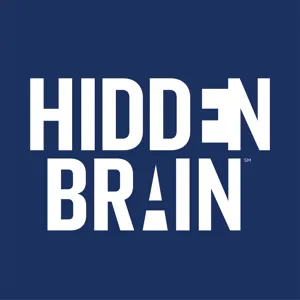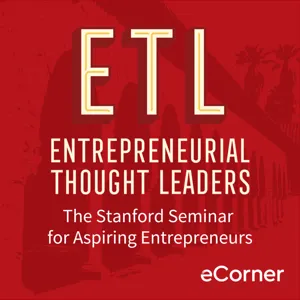Podcast Summary
The Power of Doing Less in Innovation: Narrowing focus and stripping away extraneous information can lead to better results in problem-solving and innovation. Remember that less is sometimes more.
In brainstorming sessions, we often overlook the idea of doing less and focus solely on expansion. This narrow focus can hinder innovation and prevent organizations from streamlining processes and eliminating ineffective projects. Leidy Klotz, a professor at the University of Virginia, found that stripping away extraneous information and focusing on the fundamental principles can lead to better results, as evidenced by his success in his college course on mechanics. It's important to remember that sometimes, less is more when it comes to problem-solving and innovation.
Embracing Subtraction for Better Design and Engineering: Removing unnecessary components can be more effective than adding to them. Consider subtraction as a solution instead of always adding more. This approach can lead to more innovative and sustainable outcomes.
Subtraction can be a powerful tool for improving design and engineering, as demonstrated by Anna Keichline's invention of the hollow building block. Leidy Klotz's journey to recognize the value in subtraction led him to realize that removing unnecessary components can often be more effective than adding to them. This mindset shift can lead to more efficient and cost-effective solutions. Klotz's experiment with building a bridge using Legos with his son also highlights the importance of considering subtraction as a solution instead of always adding more. Overall, embracing subtraction as a viable option in problem-solving can lead to more innovative and sustainable outcomes.
The Power of Subtraction in Innovation and Design: Subtraction can be a creative problem-solving tool, not just adding to things. Embrace the power of subtraction to find innovative solutions in all areas of life.
Subtraction can often lead to remarkable results, as demonstrated by the invention of the Strider bike and Leidy Klotz's home renovation project. Familiarity often leads us to look for ways to add to an object rather than to subtract from it, making the act of subtraction an innovative approach. In the home renovation project, Klotz challenged herself and her students to come up with designs that focused on subtraction, but ultimately, the final result was an addition. However, it's important to note that the process of subtraction still allowed for creative and livable designs. It's worth considering subtraction as a problem-solving tool in all aspects of life, from design to everyday challenges.
Overcoming Obstacles to Subtraction in Innovation: The value of adding to something is culturally ingrained, but recognizing the potential benefits of subtraction can drive innovation. However, economics and human behavior also present obstacles to this approach.
Subtraction may be a powerful driver of invention, but many obstacles stand in its way, such as economics, cultural expectations, and even human history. Leidy Klotz, an engineer at the University of Virginia, discovered this firsthand during a home renovation project. He found that the value of a home increases with square footage, making it difficult to subtract space without risking a financial loss. Additionally, architects, builders, and contractors are incentivized to add more instead of taking away. This is a cultural expectation that has roots in human history, where monumental architecture played a key role in the development of civilization. Today, people are rewarded for adding, not subtracting, which poses a challenge for those who recognize the benefits of subtraction.
The Bias towards Addition and the Importance of Subtraction in Decision Making: Our natural inclination towards acquiring more, along with cultural and logistical pressures, often prevent us from considering the benefits of subtracting. However, deliberate efforts towards efficient decision making can lead to meaningful progress both personally and professionally.
Our tendency towards addition over subtraction is driven by cultural and political pressures, the mental and logistical effort required to subtract, and a biological inclination towards acquisitiveness. Even in brainstorming sessions and university planning, people are more likely to offer ideas for additions rather than suggesting subtractions. This is further supported by research that shows our willingness to acquire and keep things, even those of little practical value. However, in order to make meaningful progress and improve outcomes, it is important to challenge this bias and make deliberate efforts towards efficient and effective decision making in both personal and organizational contexts.
The Power of Subtraction for a More Enjoyable Life: Our brains are wired to seek pleasure in acquiring things and experiences but often overlook the benefits of letting go. By consciously practicing subtraction, we can simplify our lives and improve overall well-being.
Our brains are wired to find pleasure in acquisition, whether it's acquiring food, material possessions, or experiences. This reward pathway can even be stimulated by things like website design and hoarding behavior. On the other hand, our brain often neglects the power of subtraction, meaning that we struggle to let go of things or activities even when it would make our lives easier and more enjoyable. This tendency to add rather than subtract is evident in our approach to scheduling and travel - even when presented with a jam-packed itinerary, most people tend to add rather than subtract activities, leading to an overburdened and less enjoyable experience. By recognizing and consciously practicing subtraction, we can improve our overall well-being and simplify our lives.
The Benefits of Subtraction: How San Francisco Tore Down a Freeway: Subtraction can be more beneficial than addition and communities should identify opportunities to subtract, even if it requires overcoming psychological obstacles. San Francisco's Embarcadero Freeway demolition showed how subtraction can lead to numerous benefits.
In writing and other areas, people have a tendency to add rather than subtract to improve. However, the benefits of subtraction are vast, and smart communities and individuals take advantage of opportunities to subtract. The story of San Francisco's Embarcadero Freeway shows how difficult it can be to convince people to subtract something they consider necessary. However, after an earthquake changed people's perspectives, the freeway was torn down and the waterfront was opened up, leading to numerous benefits for the community. It's important to identify opportunities for subtraction and overcome psychological obstacles to take advantage of the benefits it can bring.
The Benefits of Subtraction and How it Can Make Things Better: Subtraction can be difficult to see the value of, but the COVID-19 pandemic has shown us how removal of certain things can have positive effects. Addition and subtraction need to work together for the best results.
The COVID-19 pandemic has forced us to subtract things from our lives that we never would have managed to do on our own, such as commutes, evictions, and carbon emissions. This crisis has allowed us to see what a world with some of these subtractions might look like. However, we often need an external push, such as an earthquake or pandemic, to see the value of subtraction. Emotionally and cognitively, subtraction is difficult, and we don't get many reminders of it, making it challenging to see its benefits. Subtraction and addition need to work hand in hand, as seen in evolution, with adaptation being an addition and selection being a subtraction. Ultimately, subtraction can make things better, as seen in the removal of the Embarcadero Freeway in San Francisco, leading to an increase in housing, jobs, and the restoration of the waterfront.
The Power of Subtraction: From Nike's Air Max to Public Policy: Take a step back and consider what you can subtract from your life or work to make room for innovative ideas and opportunities. From products to policies, subtraction can be a valuable tool for progress.
Subtraction often goes unnoticed or unappreciated, but innovators can find ways to make it more visible and valuable. Nike's Air Max 1 displayed the invisible innovation of air cushioning, setting them apart and launching them to success. Measuring what we're not doing with a stop-doing list can help us make room for new tasks without overwhelming ourselves. Subtraction also has a place in public policy, where lawmakers should consider removing outdated laws instead of only creating new ones.
The Power of Subtraction in Enhancing Quality: By eliminating unnecessary elements, we can enhance the quality of various aspects of life. Simple rules like removing two laws for every new one and checklists can improve lawmaking and medicine, while art and creativity are often sparked by eliminating the unnecessary.
The practice of subtraction, or elimination of unnecessary elements, can have a powerful impact in various fields. In lawmaking, accumulation of laws has led to redundancy, and a requirement to remove two laws for every new one introduced can be a helpful rule. In medicine, a simple checklist that focuses on eliminating infection-causing elements has almost entirely eradicated catheter infections and saved lives. Tidying expert Marie Kondo's principle of keeping only what sparks joy is an example of reframing losses as additions, and a common thread among experts in various fields is the idea that art and creativity can often arise from eliminating the unnecessary.
The Power of Subtraction and Minimalism in Artistic Pursuits: Less is often more when it comes to creating impactful and powerful art, as evidenced by William of Ockham, Lao Tzu, and Bruce Springsteen's success in using subtraction and minimalism.
The power of subtraction and minimalism in artistic and creative pursuits is often overlooked, with many believing more is better. However, successful artists and creators from different eras have extolled the virtues of subtraction, with notable examples including William of Ockham's razor, Lao Tzu's teachings, and Bruce Springsteen's album Darkness on the Edge of Town. Springsteen famously recorded over 50 songs but only kept 10 for the album, with some of the cut songs becoming hits for other artists. The key lesson is that subtraction and minimalism can often lead to more impactful and powerful creations, as seen in Springsteen's stripped-down aesthetic and Racing in the Street's simple but memorable lyrics.
Barber's Creativity Helps Autistic Child Overcome Traumatic Haircut Experiences: Showing patience and using creative tactics to help children with autism during haircuts can not only make them look good but also help ease their anxiety, build trust and develop a special bond.
LaQuista Erinna's son Jackson, who has autism, had a traumatic experience with haircuts. However, she found a barber named Ree who goes the extra mile to make Jackson comfortable during haircuts. One day, when things didn't go as planned, Ree used a clever game to distract Jackson while she cut his hair, creating a special bond that has helped Jackson feel more at ease during haircuts. This special relationship has made a significant impact on Jackson's life, especially during tough times like transitioning to a new school. Ree's dedication and care have not only made Jackson look his best, but has also earned her a place in the family's heart.




